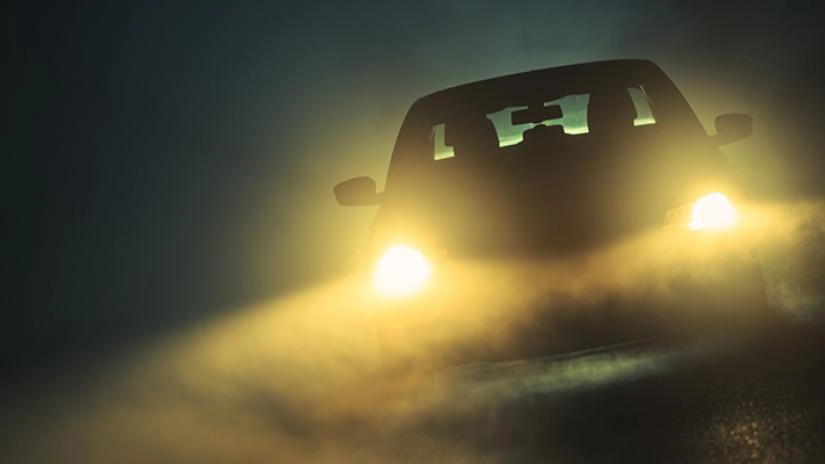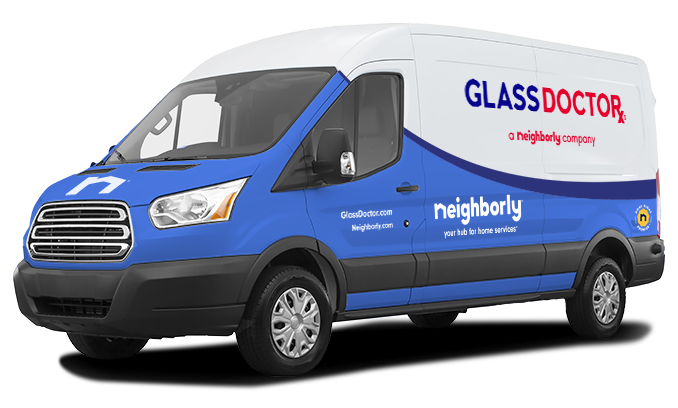
Glass Doctor explains why headlights get foggy and how to fix them.
|
The sun, rain, and road conditions can naturally cause acrylic headlights to turn cloudy, making it up to 50% more difficult to see the road at night and be seen by other drivers. So what can you do to fix it?
Whether you choose a DIY solution or need a headlight restoration, we're here to clear up the cleaning process (and that unsightly headlight film). If you're wondering does Glass Doctor offer headlight restoration near me? View our locations!
What Makes Headlights Foggy?
- Oxidation: Acrylic headlights oxidize when exposed to UV light. Headlight lenses come with a clear top coat to help prevent this, but eventually, the coating wears off, and sunlight turns the hard plastic yellow.
- Flying debris: Your headlights take a beating from gravel, road salt, and other debris that gets kicked up as you cruise down the road. This wears down the top coat and creates pits and scratches on your headlights, adding to their cloudy appearance.
- Dirt and chemicals: After several years on the road, a thin layer of dirt and chemicals forms on the lenses, dimming the beam coming from your headlights.
- Water vapor: Headlights are manufactured with a watertight seal. Wear and tear can cause this seal to break over time. Condensation then forms inside the lens where you can't wipe it away. These water droplets scatter the beam of light, further impairing nighttime visibility.
DIY Treatments for Foggy Headlights
Foggy headlights happen to the best of us, but there are some affordable ways to buff them back to life. With a few household items and a little elbow grease, you can easily refresh those headlights and improve your nighttime visibility in no time:
1. TRY: Cleaning Headlights with Baking Soda
This is a good option for mild headlight oxidation or cloudiness.
What you'll need:
- Baking soda
- Distilled white vinegar
- Spray bottle with clean water
- Microfiber cloths
- Car wash soap (optional)
Steps:
- Rinse the headlights with clean water to remove any loose dirt and debris. You can also wash them with car wash soap for a more thorough cleaning.
- Make a 2:1 paste of baking soda and water. Apply the paste to the headlights and rub it gently in a circular motion with a microfiber cloth.
- Rinse the headlights thoroughly with clean water to remove the baking soda paste.
- Apply a vinegar solution (mix equal parts water and vinegar) to the headlights and let it sit for a few minutes. This will help neutralize any remaining baking soda residue.
- Rinse the headlights again with clean water and dry them completely with a microfiber cloth.
2. TRY: Cleaning Headlights with Toothpaste
This method is similar to using baking soda. Ensure you are using a non-gel toothpaste containing baking soda.
What you'll need:
- Non-gel toothpaste with baking soda
- Microfiber cloths
- Spray bottle with clean water
Steps:
- Rinse the headlights with clean water to remove any loose dirt and debris.
- Apply a small amount of toothpaste to a microfiber cloth and rub it gently on the headlights in a circular motion.
- Rinse the headlights thoroughly with clean water to remove the toothpaste.
- Buff the headlights with a clean, dry microfiber cloth to remove any remaining residue and restore shine.
Important Note: Using toothpaste is a mild abrasive and may cause slight scratches on headlight lenses, especially if they are already heavily clouded or oxidized. It's recommended to use a headlight restoration kit for better results.
3. DON'T: Soaking Headlights in Vinegar or Using Glass Cleaner
Soaking headlights in vinegar is NOT recommended. Its acidity can damage your headlight's clear coat over time.And while applying a glass cleaner can be a quick fix, some formulations contain ammonia, which may cause slight hazing over time.
When DIY Headlight Cleaning Isn't Working
If your DIY efforts aren't yielding the desired results, it's time to reach for commercial solutions or leave it to the pros.
Caution: If you are using headlight restoration kits, polishing compounds, or commercial headlight cleaners, carefully follow the manufacturer instructions. Over-polishing can thin the headlight lens and damage your headlights.
4. TRY: Restoration Kits and Polishing Compounds
- Polishing compounds: These are mild abrasives that can buff away light oxidation and restore some clarity.
- Headlight restoration kits: These typically include a sanding disc or pad, a polishing compound, and a UV protectant.
How to Keep Headlights from Turning A Cloudy Yellow
Now that your headlights are sparkling clean, let's keep them that way by:
- Parking your car in the shade. If possible, park in the garage or under a shady tree. Alternatively, face your headlights away from the sun when parking outside. It can reduce UV exposure to help slow the oxidizing process.
- Washing your headlights. Every three months, wash the headlights to clean away dirt and chemicals that may promote fogging.
- Polishing the headlights. Use a non-abrasive polishing medium and a microfiber cloth to polish your headlight lenses and remove early signs of yellowing.
Glass Doctor's Restoration Expertise
If your DIY efforts haven't delivered any clear results at this point, lean on Glass Doctor. We can remove oxidation, scratches, and hazing restoring your headlights to like-new condition. Contact your local Glass Doctor today.
Professional Headlight Restoration Services Pay Off
Typically, the results from DIY headlight cleaning only last about a month. FOr an effective-longer term solution, Glass Doctor applies the proper steps for a lasting shine by:
- Sanding the headlights to remove the oxidized outer layer.
- Polishing the headlights to remove scratches that obscure the light and attract dirt.
- Sealing the headlights with a high-quality clear coat to slow future yellowing.
- Fixing the headlight's watertight seal so condensation can no longer form inside the lens.
Restore Your Hazy Headlights with Help from Glass Doctor
Whether you've tried your hardest or simply want to leave it to the pros, you can always let the team at Glass Doctor restore your headlights. Our Neighborly Done Right Promise® ensures we get it done right. Contact us today to schedule your headlight restoration services.
Foggy Headlight Cleaning FAQs
At Glass Doctor, keeping things clear is what we do best. We've got extensive experience with various types of glass, including the headlight lenses on your vehicle. That's why we're here to answer all your common questions about cleaning and maintaining foggy headlights:
How often should I clean my headlights?
There's no one-size-fits-all answer, but generally, you should clean your headlights whenever you notice a decrease in their clarity. You may notice cloudiness due to a buildup of dirt, grime, or oxidation. A good rule of thumb is to wipe them clean every few months, especially if you drive frequently at night or in dusty conditions. If the cloudiness perists, it may be time to consider professional headlight cleaning.
Should I take my car to a professional to clean foggy headlights?
The answer is yes, if your headlights are heavily oxidized or scratched. Professionals have the tools and expertise to achieve a clearer, longer-lasting restoration. They can also assess if the headlights need replacing altogether.
How do I deal with heavily oxidized lenses?
Heavily oxidized lenses require a more aggressive cleaning process than a simple wipe-down. Professional headlight restoration typically involves sanding and polishing the lenses with specialized equipment to remove oxidation and restore clarity.
How much does it cost to get headlights professionally cleaned?
The cost of professional headlight restoration can vary depending on your location and the severity of the oxidation. However, compared to the cost of replacing headlights entirely, professional restoration can be a much more affordable solution.

